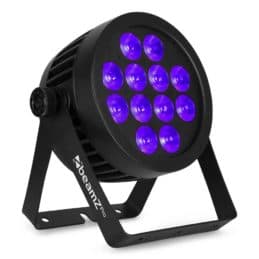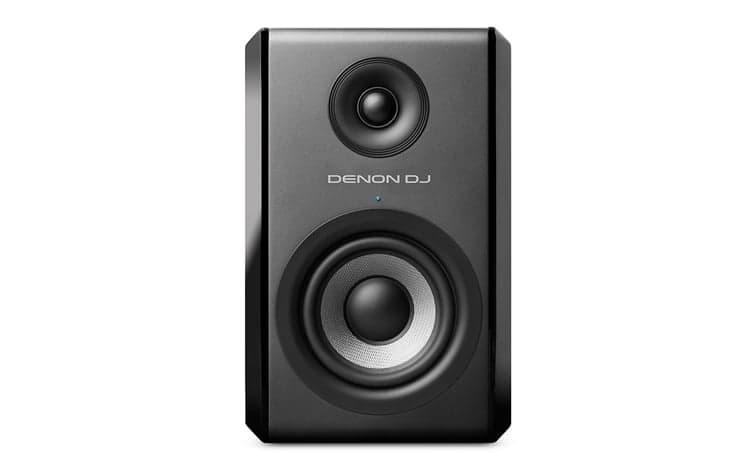
Monophonic vs. Polyphonic Synthesisers
Once upon a time, there was no such thing as monophonic, polyphonic, analog or digital synthesisers. There were simply synthesisers, in their monophonic forms with similar electrical circuitry and rather complex designs.
Nowadays, the range of synthesisers available and used is much wider. But understanding the difference between monophonic and polyphonic synthesisers isn’t that complicated. To help you clarify the difference between the two and various uses of each, we’ve broken down everything you need to know in this handy article.

What is a Synthesiser?
A synthesiser is basically just a musical device that creates audio signals electronically. Normally, these sounds are created through the generation of waveforms through a method such as frequency modulation synthesis or subtractive synthesis.
In other words, a synthesiser recreates sounds artificially, let’s say of an instrument, for use in the production or creation of music.
Using Synthesisers in Music
There are no set rules when it comes to using synthesisers in music and DJ track creation. Exploring and experimenting is certainly the key to creative music production, and the same applies to synths.
From the oscillator to the filter, there are a number of different factors that can affect the type of sound your synth creates. Whether you want to play around from session to session, or you want to save your presets for future use, the choice is up to you.
As you develop your skills at using the synth, preset patches or otherwise, you can start using it during your live sets and on-stage performances, much like a musician would play an instrument in concert as well as jam around during recording or writing sessions.
Where and When to Use Synthesisers
Both monophonic and polyphonic synthesisers can be used to recreate the sounds of other musical instruments or to create all-new sounds that can’t be achieved through other means.
Nowadays, just about all artists across all genres have used synthesisers in one way or the other. Whether it’s dubstep or EDM, jazz or rock, synthesisers are used widely and to great, creative effect.

The Development of Synthesisers
Nowadays, most digital synthesisers are polyphonic. Nonetheless, despite the complicated nature of polyphonic synthesisers in days gone by, the advancement of technology has meant that even polyphonic devices are significantly less complicated than the analog versions that came before.
And that’s not where the benefits end either. Polyphonic synthesisers are significantly cheaper, even compared to monophonic versions.
Analog synthesisers would need to have each individual note or sound routed through the signal chain. This meant that getting more than one sound was very difficult. As the world of electronic music production marched on and evolved, the rise of digital synthesisers changed the game.
Digital Synthesisers
Around 40 odd years ago, digital synthesisers first started to appear in the market, pioneered by the Fairlight CMI model.
Of course, at this time, the initial models were prohibitively expensive and it took a number of years and more competition for the synthesisers to be practical and available to general artists and producers. In addition to the reliability, flexibility and usability of digital synths, they also allow for both monophonic and polyphonic synthesis. So, despite some purist, nostalgic resurgence in analog synths’ popularity and use, the digital synthesis has all but replaced them.
Monophonic Synthesiser vs Polyphonic Synthesiser
Monophonic Synthesiser
A monophonic synthesiser creates only one sound or note at a time. Hence the name: mono meaning one and phonic meaning sound.
Due to the singular nature of the job of a monophonic synthesiser, they are more often than not smaller, cheaper and simpler in design than a polyphonic synthesiser.
Below are some of our favourite mono synths! (Note that the TAKE-5 is a great affordable alternative to the PROPHET5)
Polyphonic Synthesiser
In contrast to the monophonic synthesiser, the polyphonic can make more than one note at once. If you’re recreating chords, or creating multi-layered musical harmonies, using a polyphonic synthesiser is a must.
Below are some of our favourite poly synths! (Note that the MINIBRUTE2BK is a great affordable alternative to the MATRIXBRUTE)
The Key Differences
Sound
It’s not just the number or quantity of sounds that differ from one synthesiser to the other. It’s also the quality as well, or at least according to some. Many keyboard players and artists believe that the monophonic synthesiser sounds are more full and wholesome than that produced by a polyphonic synth. Perhaps, this is one of the reasons for the renewed interest in analogy mono synths nowadays.
Size
There is also a significant difference in the ‘size’ of the sound being produced. Monophonic synthesisers allow for a larger tone as it only produces one note at a time. The polyphonic synthesiser is producing more than just one note at the time, which while beneficial, does mean that the sounds tend to be somewhat thinner in sound.
Cost
If you’re considering buying a synthesiser, apart from being guided by what sort of sounds you need to create, you also need to consider your budget. Of course, there is a wide range of synthesisers on the market and they come at different price points, monophonic synths are normally cheaper than polyphonic ones.
Use
The truth is that polyphonic synthesisers sold nowadays are actually monophonic as well. That means you can, if you so choose, produce a single sound in its monophonic mode. Polyphonic synthesisers are therefore more flexible in use and allows you to meet more and more varied music creation and production needs.
There are occasions, however, where you might want to consider a monophonic synth. If you are looking to create a very specific type of sound iconic to the analog mono synths of the past or you’re simply looking to supplement a second keyboard with the synth, you don’t necessarily need a polyphonic option.
Contact DJ City For All Things Synthesisers
The truth is that the choice between a monophonic or polyphonic synthesiser is one that’s up to you and dependent on your needs. But that doesn’t mean you have to make the decision alone.
Our friendly team here at DJ City are always available to provide much needed guidance and assistance. So contact us today and ask us all your synthesiser-related questions!

















